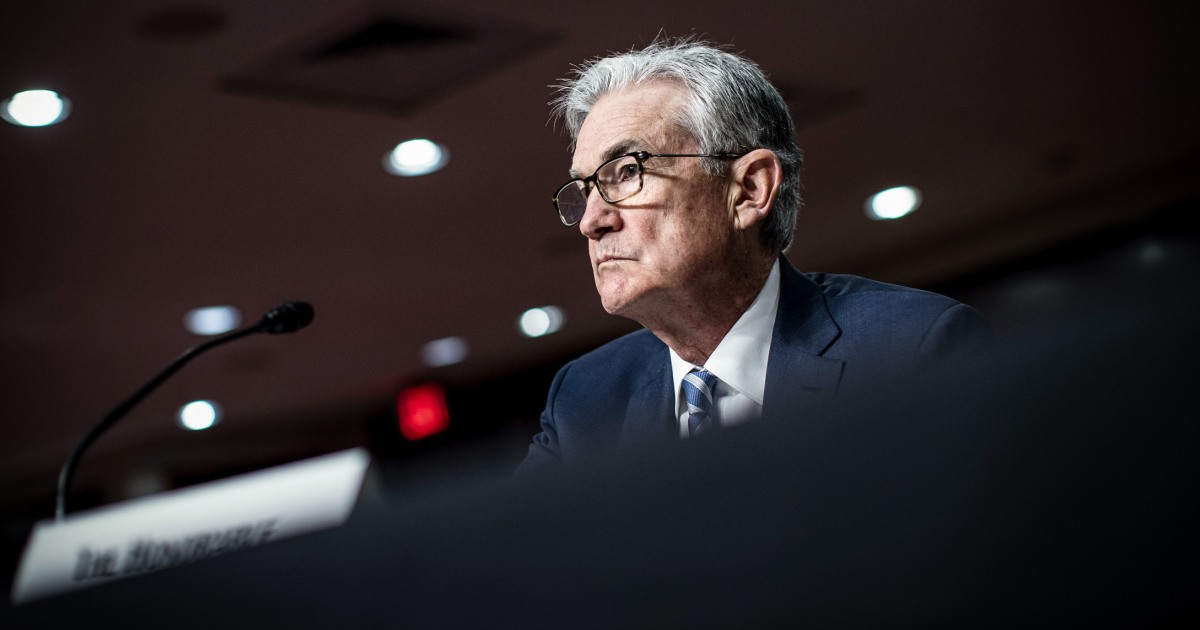
Federal Reserve Chairman Jerome Powell will be in the hot seat on Capitol Hill Tuesday, as he testifies before the Senate Banking Committee in his renomination hearing. Coming just one day ahead of a Consumer Price Index reading that is expected to show a sky-high 7 percent annualized inflation rate, the hearing is likely to be dominated by the topic of fast-rising prices and how the Fed plans to respond.
“We know that high inflation exacts a toll, particularly for those less able to meet the higher costs of essentials like food, housing and transportation,” Powell wrote in prepared remarks before the committee, adding that the Fed’s goal now is to keep this high inflation from becoming entrenched.
To some market observers, this is a belated realization. “These are shockingly high levels of inflation we haven’t seen since the early ‘80s. That’s a big concern,” said Darren Schuringa, CEO of ASYMmetric ETFs. “What’s the duration, and when does it start to come back to normal levels? That’s I think where the focus will be initially in the questioning,” he said.
“Those questions are really an assessment of the fact that the Fed has admitted it’s behind the curve on inflation,” said Brian Vendig, president of MJP Wealth Advisors. “The committee’s going to get clarity [on] what aspects of inflation might still be tied to supply chain efficiencies… and how persistent that might be over the course of the year, [because] constituents are obviously concerned about heightened inflation.”
After spending much of 2021 characterizing steadily building inflation as “transitory” — triggered by supply chain bottlenecks rather than more fundamental drivers — the Fed shifted its stance over the last few months and indicated a future trajectory that backs out much of the pandemic-era policy support it put into place to prevent a financial meltdown in March 2020.
Despite the unprecedented economic disruption stemming from the pandemic, Powell has generally enjoyed bipartisan support.
Powell acknowledged the unprecedented nature of both the economic shock dealt by the pandemic as well as the uncharted path of the recovery. “Monetary policy must take a broad and forward-looking view, keeping pace with an ever-evolving economy,” he said.
In keeping monetary policy accommodative for close to two years after the Covid-19 pandemic hit American shores, Powell and other Fed officials had made the argument that it was necessary to keep rates low and backstop bond markets until the labor market recovered from its swoon.
“Policymakers are concerned that if we go too hawkish too quickly, that’s going to pump the brakes on the economy when we’re still trying to get people into the labor market and reopen the services part of the economy,” Vendig said.
Now, with unemployment at 3.9 percent — albeit in the face of a historic shortage of workers and lagging labor force participation — Fed officials and Congress members are revisiting that rationale.
“The question would be, if 3.9 percent isn’t your target to start normalizing rates, then what is?” said David Bahnsen, chief investment officer of The Bahnsen Group.
“It was always a kind of soft definition and it’s changed from cycle to cycle,” said Ross Mayfield, investment strategy analyst at Baird. Even prior to the pandemic, Powell had often spoken of the need to adopt a more inclusive definition of what “full employment” entails.
“We’ve got an underrepresentation by race and gender, and those challenges continue to persist. And labor force participation, that’s a gap that has not been fully filled,” said Eric Freedman, chief investment officer at U.S. Bank Wealth Management.
Despite the unprecedented economic disruption stemming from the pandemic, Powell has generally enjoyed bipartisan support throughout his tenure, but questioning could at times become heated, particularly from more left-leaning senators such as Elizabeth Warren of Massachusetts.
“I’m expecting her to not back down,” Bahnsen said, pointing out that targeting Powell could be a way for progressive lawmakers to define themselves in opposition to moderates in President Joe Biden’s administration who favored renominating Powell. “The political tea leaves have moved,” he said.
While inflation is expected to dominate the conversation, other topics on which Powell could face questions include the state of banking regulation, rules and ethics pertaining to trading activities undertaken by Fed officials and whether or not the central bank’s dual mandate should be expanded to encompass broader issues such as racial justice and climate change. Powell referenced climate change in his prepared remarks to lawmakers, characterizing it as one of a number of “evolving threats” to financial stability.
Narayana Kocherlakota, professor and chair of the economics department at the University of Rochester, and a former president of the Federal Reserve Bank of Minneapolis, predicted that Powell also will be asked about Biden’s currently stalled Build Back Better spending package and the implications of that spending on the current state of inflation.
While even four rate hikes would only raise the average borrower’s minimum payment by a few dollars every month, many households are already struggling to stretch their dollars as prices rise.
“He is highly unlikely to make any explicit comments about ongoing debates about fiscal policy,” Kocherlakota said — but he expects senators to focus on the topic regardless, given the high political stakes for both parties in a midterm election year with GDP projected to slow.
While discussion of monetary policy can seem detached from the reality of ordinary Americans’ personal finances, paying more to service revolving debt is a reality to which borrowers should adapt, experts say.
“Obviously, the Fed raising interest rates this year will have definite ramifications for consumers,” said Ted Rossman, senior industry analyst at Bankrate.com. “Credit card rates are already quite high… and they’re probably headed higher,” he warned. While even a full percentage point increase — or, four rate hikes, in Fed-speak — would only raise the average borrower’s minimum payment by a few dollars every month, the cumulative burden of that debt can build, especially for households already struggling to stretch their dollars as prices rise.
There are indications that Wall Street is beginning to worry, as well. After notching multiple record highs, markets have stumbled in recent days as investors digest the prospect that the Fed might tighten policy more aggressively or more quickly — or both — than anticipated.
Goldman Sachs’ chief economist said on Sunday that he now expects four quarter-percentage-point hikes this year: One each in March, June, September and December. The Wall Street Journal on Friday reported that Thomas Barkin, president of the Federal Reserve Bank of Richmond, said it was “conceivable” that the central bank could undertake its first rate hike as early as March. Barkin is not one of the Fed officials who votes on rate actions this year.
“The market had been pricing in three rate hikes and we were still hitting all time highs,” Mayfield said. “I think the market could take it in stride” if a fourth rate hike was on the table, he said. The prospect of an outright balance sheet reduction, though, could be another story.
Since the pandemic began, the Fed committed to buying billions of dollars worth of Treasuries and mortgage-backed securities every month, a program it recently announced plans to wind down. Fed-watchers were quick to point out, though, that this would leave the central bank with a vastly inflated balance sheet. The pace and timing of selling off those assets is a top concern for market participants.
“I think that’s the thing to watch, the balance sheet runoff,” Mayfield said, adding that a combination of simultaneous tapering or rate increases in conjunction with bond-selling could spook markets. “If they get really aggressive on balance sheet runoff at the same time, I think the market might capitulate more.”
Source: | This article originally belongs to Nbcnews.com









